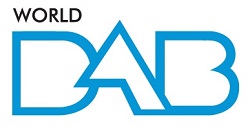Terrestrial digital radio and its satellite counterpart in the United States and abroad will gain increasing acceptance among consumers within the next 5 years. That’s according to high-tech market research firm In-Stat/MDR, which reports that, even though the digital radio space is being developed at one of the most economically challenging points in time over the last 50 years, receiver manufacturers are ramping up production to meet growing customer demand for these services.
“Major markets like the U.K., Germany and Canada are starting to show how vital digital is in adding more value to radio service as DAB is inspiring a whole renaissance of new programming choices,” said Michelle Abraham, a senior analyst with the high-tech market research firm. Those countries are using the Eureka-147 DAB standard and the U.S. will likely adopt in-band, on-channel standard for DAB.
In the U.S. market, inroads made by satellite digital radio services like XM and Sirius and increased momentum behind DAB from major radio station groups suggest that the next few years will witness the rapid development of digital radio.
The report, “Digital Radio Moves Into Drive Time”, examines the current services, future advances, and offers points to be learned from digital radio outside the United States. Contained within, are 5-year U.S. forecasts for DARS subscribers and digital radio receiver shipments.
In-Stat/MDR has also found that:
As Ibiquity Digital Corp. technology is added to more stations, there will be a divergence between the number of digital receivers sold and the subscriber base of the two satellite radio services. For many consumers, the new features available on the free terrestrial DAB channels will be enough, and they’ll opt against the satellite services.
The success of digital radio in the United States will depend to a great extent on automotive manufacturers, as many consumers’ introduction to digital radio will come in an automotive setting.
Peek at Digital Radio Now and in 5 Years
Peek at Digital Radio Now and in 5 Years











